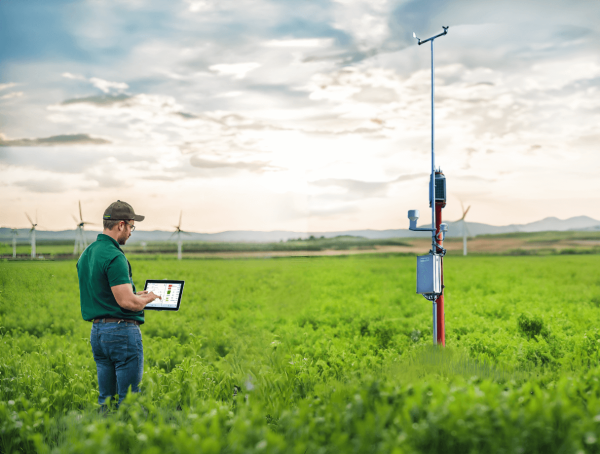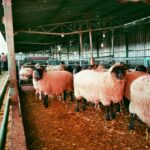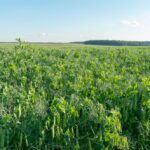In recent years, the Internet of Things (IoT) has revolutionized agriculture worldwide. IoT-enabled weather stations, which gather real-time weather data to help farmers make informed decisions, have proven to be a game-changer in regions like India. As South African farmers face challenges such as unpredictable weather patterns, water scarcity, and fluctuating crop yields, they can benefit significantly from adopting similar IoT technologies. By leveraging smart weather stations, South African farmers can optimize resource management, improve crop production, and increase overall farm resilience.
What Are IoT Weather Stations?
IoT weather stations are a network of interconnected sensors that collect real-time data on temperature, humidity, rainfall, wind speed, soil moisture, and other climatic factors. These stations transmit the data to cloud-based platforms where farmers can access detailed weather forecasts, trends, and insights on their mobile phones or computers. IoT weather stations offer farmers a localized and highly accurate understanding of weather conditions in their specific regions, which helps them make timely decisions on irrigation, fertilization, pest control, and harvest timing.
IoT Weather Stations in India: A Model for South African Farmers
Farmers in India have increasingly turned to IoT weather stations to deal with unpredictable monsoon seasons, changing climate patterns, and frequent droughts. The technology has enabled Indian farmers to adapt to these challenges and improve agricultural productivity. Some of the key benefits Indian farmers have experienced include:
- Precision Irrigation
In India, water management is crucial, especially in regions where droughts are common. IoT weather stations provide real-time data on soil moisture and rainfall, helping farmers decide the optimal time for irrigation. This reduces water waste, saves energy, and ensures crops receive the right amount of water. South African farmers, especially in dryland and semi-arid areas, can adopt this practice to combat water scarcity and optimize water usage. - Early Pest and Disease Detection
IoT weather stations help farmers track environmental conditions that favor pest infestations and crop diseases. By monitoring humidity, temperature, and rainfall, farmers can identify potential risks and take preventive measures such as pesticide application or crop rotation. This approach helps reduce crop losses and minimizes the overuse of chemicals. South African farmers can use this data to protect their crops from pests and diseases, improving both yield and sustainability. - Accurate Weather Forecasts
In India, IoT weather stations provide highly localized weather forecasts, allowing farmers to plan their activities based on accurate predictions. Whether it’s determining the best planting time, planning for rainfall, or avoiding adverse weather conditions during harvest, having access to precise forecasts enables farmers to reduce risks associated with weather-related disruptions. South African farmers, particularly those in areas affected by unpredictable rainfall or extreme weather events, can use similar systems to make data-driven decisions. - Increased Crop Yields
By leveraging the data provided by IoT weather stations, farmers in India have been able to optimize crop management practices. They can adjust their use of fertilizers, water, and pesticides based on real-time data, leading to healthier crops and increased yields. South African farmers can adopt these methods to improve productivity and reduce input costs.
How South African Farmers Can Benefit
South African farmers face unique challenges, including frequent droughts, erratic rainfall, and the threat of extreme weather events. Adopting IoT weather stations can help mitigate some of these issues:
- Efficient Water Management
Given the widespread water scarcity in South Africa, especially in regions like the Western Cape, IoT weather stations can provide farmers with real-time data on soil moisture and rainfall levels. This allows for precise irrigation scheduling, reducing water wastage and ensuring crops receive adequate water. - Improved Risk Management
South African farmers can use IoT weather stations to gain early warnings about adverse weather conditions, such as storms, hail, or frost. With this information, they can protect crops and equipment, plan harvesting around good weather windows, and avoid potential losses from unforeseen weather events. - Enhanced Climate Resilience
As climate change causes more unpredictable weather patterns, the ability to make informed decisions is crucial. IoT weather stations provide farmers with the data they need to adapt to these changes, whether by altering planting schedules, selecting drought-resistant crop varieties, or managing inputs more efficiently. - Cost Savings
By optimizing water use, pesticide application, and fertilization, South African farmers can save on input costs. IoT weather stations help farmers reduce waste, increase crop efficiency, and maximize profitability.
Challenges and Considerations
While IoT weather stations offer significant benefits, there are several challenges to consider:
- Initial Setup Cost: The technology can be expensive, particularly for small-scale farmers. However, the long-term savings and productivity gains often outweigh the initial investment.
- Connectivity Issues: Remote areas may face difficulties in accessing the internet or cloud-based platforms. Ensuring reliable connectivity is essential for effective IoT deployment.
- Training and Adoption: Farmers must be trained on how to use the technology and interpret the data provided by the weather stations. Support programs and partnerships with tech companies can help overcome this barrier.
IoT weather stations have proven to be an invaluable tool for farmers in India, helping them manage water resources, detect pests and diseases early, and optimize crop management. South African farmers can benefit from adopting similar technologies to enhance their resilience to climate change, improve productivity, and reduce operational costs. As more affordable solutions become available and rural connectivity improves, the widespread adoption of IoT weather stations in South Africa could play a crucial role in ensuring the future of sustainable farming.
Join 'Farmers Mag' WhatsApp Channel
Get the latest Farming news and tips delivered straight to your WhatsApp
CLICK HERE TO JOIN






